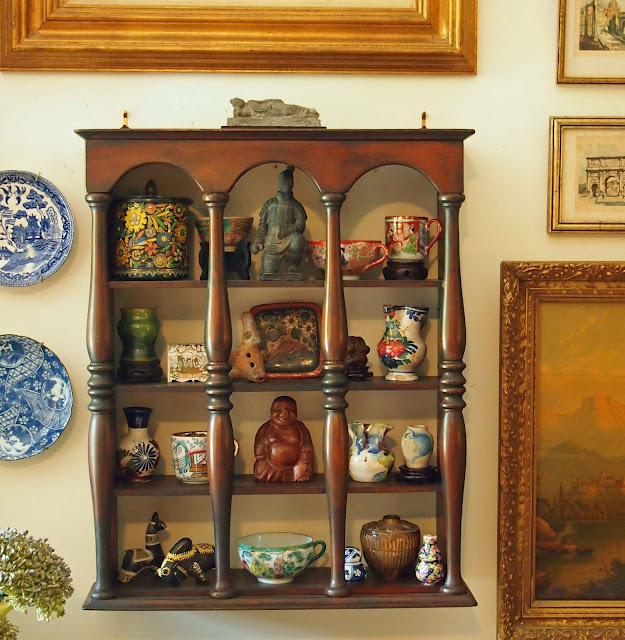Completed Pillow
Finished the $2 pillow with another $2 pillow used as backing and the stuffing which was pristine after a good wash. All the poly-fill lay on a table for a day to completely dry. It looked like I had a bank of clouds on the tabletop. I hadn't expected the filler from the second pillow to be usable. But after it went through the wash, I opened the internal liner and inspected the poly-fill, which was perfect.
Reusing second hand textiles is always a gamble. A completely usable item is a nice find. A good laundering or multiple hand washes and you see what you have to work with. (Dry-Clean-Only items I generally disregard.) But seconds shopping can provide a good chance at experimentation. The embroidered needlepoint I found earlier this year didn't pass muster for use as a pillow and found its way into a frame. That one was a $4 find and if it had proved unusable it was inexpensive enough to toss. And as ever, a chance at learning something new.
This crewelwork pillow had a mold stained backing cloth. (I had tossed the compromised filler at the store.) The backing could not be saved and was discarded. Assume that if one part appears stained with mold, all is compromised. When I looked this over at the store, I found the crewel work section unblemished but treated it as if it might be harboring mold spores. Several gentle soaks with vinegar and soapy water and sunshine drying in the hot summer sun ensured no chance at mold growth.
The crewel work front piece was in good condition. It had be hand sewn to adjust for any crewel work at the edges that were loose or incomplete. I photographed it atop the heavy books I've been using to weigh it down and reduce some of the fluffiness that comes from using loose poly-fill.
All in: $4, five gentle hand washes, and two days of hand stitching and stuffing.



